| 1 | Horseshoe whipsnake |
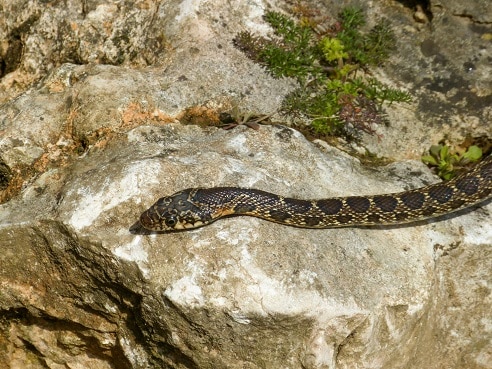
A non-venomous snake which moves through the Spanish countryside at a rapid pace. This species reaches up to 185cm, and has an aggressive personality, lunging and snapping viciously at anyone that invades its personal space.
Horseshoe whipsnakes (Hemorrhois hippocrepis) are found in the southern two thirds of Spain, where they’re extremely abundant, crawling over rocks and dirt roads constantly in their neverending quest for calories. They’ve also become an invasive species on Ibiza, where they’re wreaking havoc on the native Ibiza wall lizards.
Horseshoe whipsnakes are common partly because they have a highly flexible diet. This consists of 45% mammals, 28% reptiles, 17% birds, and 10% amphibians according to a 2004 study. Specific prey include Iberian wall lizards, house sparrows, black rats and wood mice. Horseshoe whipsnakes are also willing to scavenge rotting carcasses, and for some reason, they always swallow their prey head first.
Horseshoe whipsnakes aren’t fussy about their habitats, but gravitate towards open areas such as Mediterranean shrubland, crop fields and rocky grassland. They usually avoid the densest, darkest forests. Their closest living relative is the Algerian whipsnake (Hemorrhois algirus) found in North Africa, from which they’re estimated to have diverged 4-7 million years ago.
| 2 | Lataste’s viper |
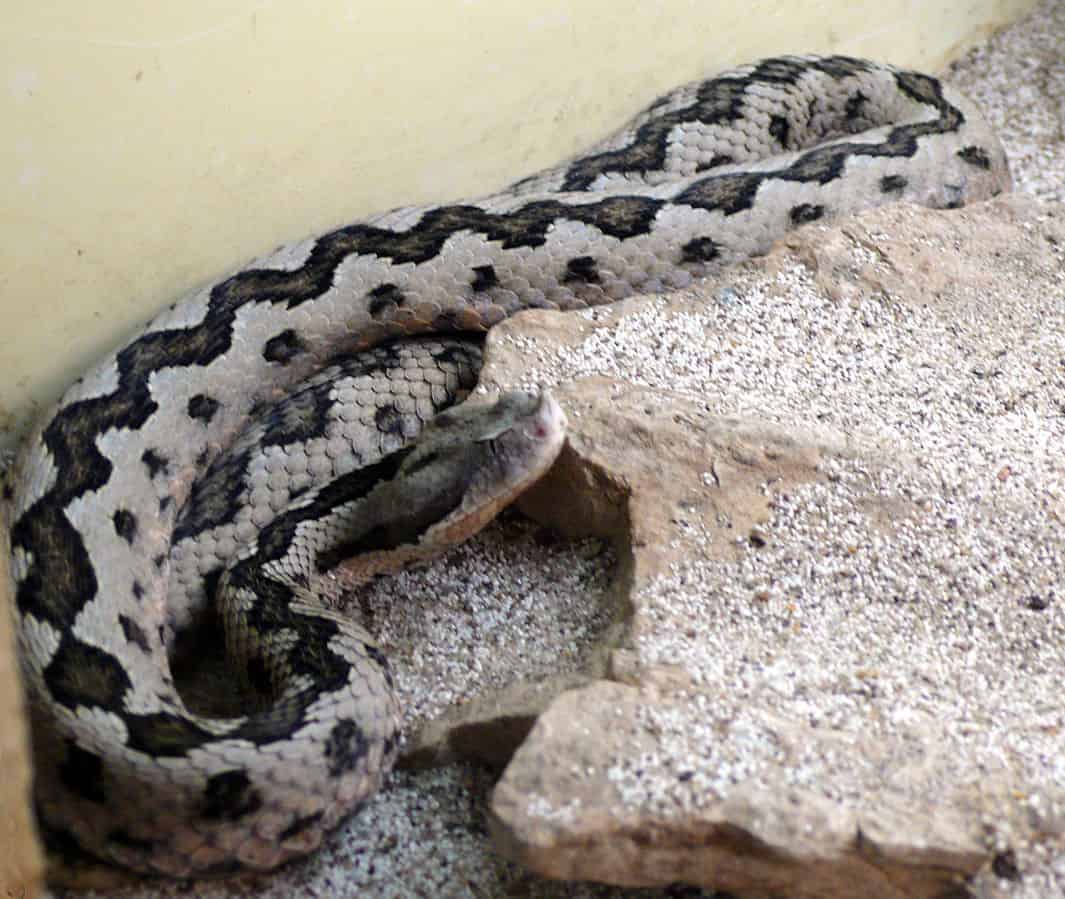
The Lataste’s viper is Spain’s main viper, and the only seriously dangerous snake species in central and southern Spain. It belongs to the Vipera genus of true vipers like the UK’s adder, and is recognisable by its rocky grey scales and upturned nose like a rhino’s horn.
Lataste’s vipers (Vipera latastei) aren’t severely venomous, with a small venom yield of 15-30mg. However, 5 people died from its bite from 1997-2009. The main symptoms are necrosis and haemorrhaging, with blackening patches of skin spreading outwards from the bite site.
Luckily, Lataste’s vipers are found only in rural areas, and even then, they’re mainly found on rocky slopes and in holm oak forest. This species has narrow habitat requirements, never appearing in crop fields or village playparks. Their grey scales are optimised for camouflage in the steep rock field habitats they favour. Consequently, Lataste’s vipers are rarer than they used to be.
This is a small viper, at a maximum of 73cm, and an average of 30-60cm. Lataste’s vipers inhabit the southern two thirds of Spain (plus Portugal), skipping the northern coast and Pyrenees foothills. Crazy beliefs surround the Lataste’s viper, such as a mournful song they supposedly produce from the bushes, to lure curious people into their deadly trap. Tales abound of them stalking terrified villagers for miles and miles. Are these true? Probably not, but we don’t know everything about the snake kingdom.
| 3 | Viperine water snake |
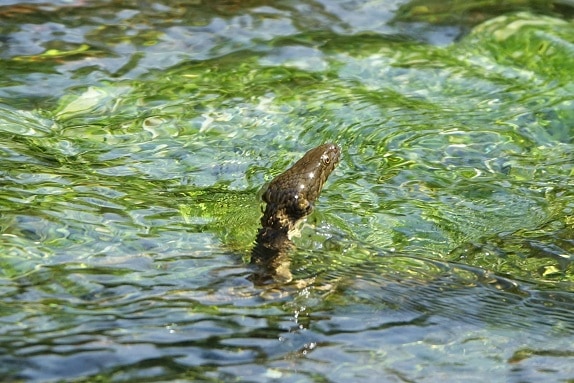
A member of the harmless Natrix genus, also containing grass snakes. This is a semi-aquatic snake which gets its name from mimicking vipers with its beige-black colours, in order to gain a survival advantage. Viperine water snakes (Natrix maura) even perform mock lunges like a viper, and can transform their skull shape on command to make it more triangular.
This is a water-loving snake which spends much of its time in rivers and lakes. Hatchlings hunt tadpoles and earthworms, while adults graduate to the tasty delights of fish and frogs. Perez’s frogs and European eels are two Spanish species they’re known to feed on.
Natrix maura is a clumsy hunter, as in a study from Spain’s River Jalon, they struck at fish 124 times, but only successfully seized them twice, and even then failed to swallow. They normally wait in ambush, but sometimes swim directly at swarming schools of fish, biting down when they feel any contact against their scales.
This species is no threat to a sun-seeking holidaymaker. The viperine watersnake will rarely bite even if picked up and cradled in the palm of your hand. Natrix maura reaches a maximum of 92.9cm, and inhabits the whole of Spain, plus Portugal, southern France and Italy (and North Africa).
| 4 | Ladder snake |
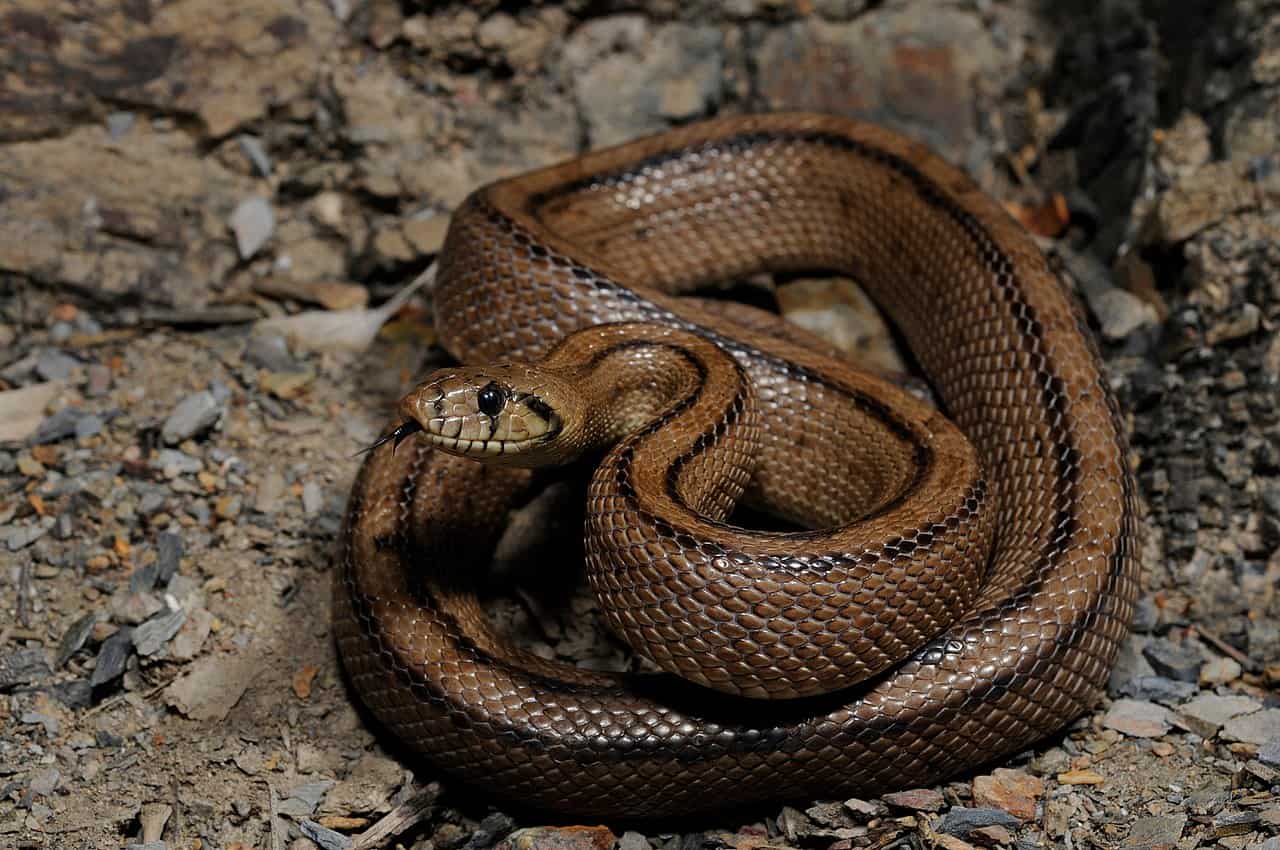
This 100cm species is the top mammal eater of all Spanish snakes. Ladder snakes (Zamenis scalaris) are non-venomous, yet highly aggressive if provoked, and live all over the Spanish countryside. They can rear their serpent heads in pine forests, holm oak forests, hedgerows bordering dirt tracks, and dry pasture land alike.
Ladder snakes also lurk in the stone rubble of abandoned buildings, and get their ladder title from markings down their spine as a hatchling, which fade into adulthood. The longest ever ladder snake reached 165.0cm, discovered in the Spanish municipality of Jaen.
This Spanish constrictor loves to invade burrows, weaving stealthily through dark tunnel networks, in order to feed on sleeping mammals. Ladder snakes can swallow several small mammals at once, ambushing them in their underground nest chambers where they think they’re safe. Their single favourite species is the Mediterranean pine vole, making up 24.6% of its calories.
They also have their own nemesis: the short-toed eagle. This snake-eating bird is particularly common in Spain, and the ladder snake is their favourite species to eat (exactly why is a mystery). To escape, ladder snakes stash themselves in hollows in the trunks of olive trees. These trees are often uprooted and shipped overseas for ornamental purposes, meaning that the ladder snake is now an invasive species on Ibiza and Formentera.
| 5 | Montpellier snake |
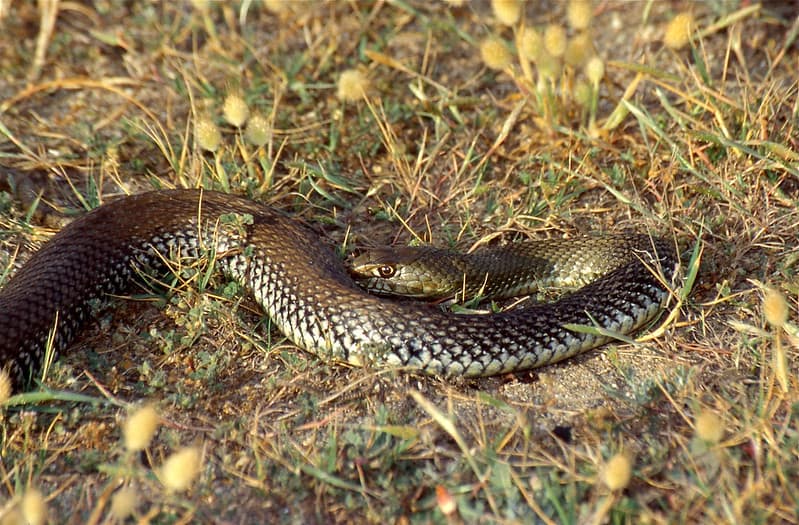
The official longest snake in Spain, reaching a confirmed maximum of 216.2cm, although there’s rumours of even longer ones out there. This is a very common snake in Spain, which is always zooming around the countryside, travelling hundreds of metres in the average day. Montpellier snakes have a neurotoxic venom, but are no threat to humans, as their mouths are too small to bite, unless you deliberately poke your finger into them. Its venom causes paralysis, blurred vision, and breathing difficulties, and can paralyse a wall lizard in 50 seconds.
According to one study, montpellier snakes eat 51.2% reptiles, 35.3% mammals, and 13.5% birds. They’re a very flexible eater, and they often invade crop fields in search of rodents. Montpellier snakes also pop up in towns, parks, garbage dumps – there’s few limits on this adventurous Spanish serpent. They inhabit Spain, Portugal, plus Morocco, where they’re a staple of traditional snake charming ceremonies.
Montpellier snakes are a rare snake to shine their own scales. They secrete a waxy rich in long chain fatty acids, and steadily rub it into every centimeter of their body using their nose. The reasons are unknown, but it might be to prevent moisture loss in the hot midday Spanish sun (as this is a day-faring snake).
| 6 | False smooth snake |
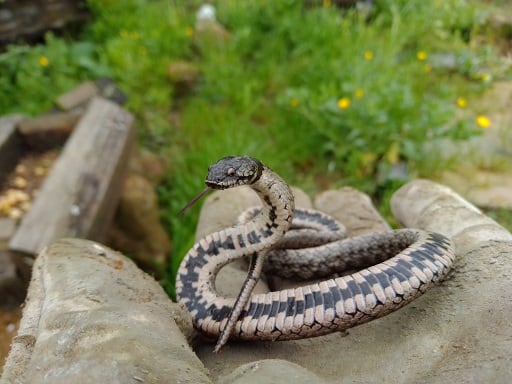
A humble soil dweller which is only seen rarely by ordinary Spanish people. This is a mildly venomous snake, which lurks in dark burrows for most of the day, pokes its head out at 6:00pm, and ventures out to hunt reptiles (its main prey) in complete darkness.
False smooth snakes require areas with plenty of moisture. Forest clearings, damp riversides and forest outskirts fit the bill, as do scrublands with soft soils. You’ll never find this species on a dusty, dry dirt track like the montpellier snake.
False smooth snakes get 50% of their calories from a single reptile, the Iberian worm lizard. They’re extremely slow hunters, and can take 70 minutes to disable and swallow one reptile. Iberian wall lizards are another of their favourite prey.
To recognise this Spanish snake, simply look at the neck: false smooth snakes always have an unbroken black neck collar, whether their body is olive or cream-coloured. This snake maxes out at 59.8cm, and is believed to have reached Spain very recently, only in the last 10,000 years. Those in Spain have a genetic divergence with the North African populations of just 0.1%.
| 7 | Red-eyed grass snake |
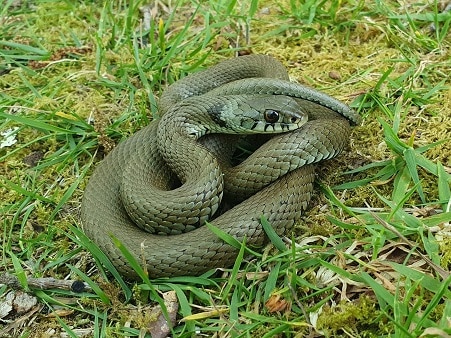
The Spanish version of the harmless grass snake found all over Europe. Until 2016, the Spanish populations were merely a subspecies: Natrix natrix astreptopphora. Then scientists discovered differences large enough that it was clearly independent. It had unique ruby-shaped eyes, fewer belly scales, and a subtly different skull shape.
What’s more, the red-eyed grass snake overlapped with the main species in extreme southern France, yet the two never interbred. The two grass snakes had no interest in each other, proving that they were independent genetically, diverging millions of years ago. Ruby-eyed grass snakes reach a record of 119.0cm, and inhabit the whole of Spain. They mainly eat frogs, and are surprisingly skillful swimmers. If picked up, they never bite, cowering in their coils instead.
This Spanish grass snake also likes drier habitats compared to the main European version. Though harmless, one of their tricks is rearing up and flaring their neck like a cobra, to convince predators that it’s severely venomous. This is thought to be a copy of a European cobra which is now extinct. Migratory birds from Africa still carry the fear of cobras, and when they dock in Spain, this grass snake retains the power to scare them off.
| 8 | Baskian viper |
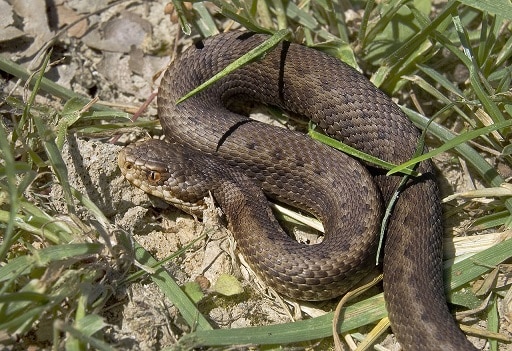
Lataste’s viper inhabits the southern three quarters of Spain, but the Baskian viper (Vipera seoanoi) is firmly in control of the north and northwest. This species has noticeably more complex patterns than its cousin, like an ornate rug in a mansion, while Lataste’s vipers have a single large, sloppy zigzag down their spine. Baskian vipers tend to be olive as well, rather than stony grey. This is one of the mildest true vipers in Europe.
Compared to Lataste’s viper, Baskian vipers are less commonly found in rock fields. They prefer thickets on the borders of forests, thickets near agricultural areas, and grassy meadows. Baskian vipers are especially common in the Cantabrian mountains, where they can be very abundant in certain spots. Baskian vipers reach altitudes of 1900 metres in the Cantabrian mountains, and acquire 85-90% of their calories from mammals.
At a record of 75cm, this species is almost identical in length to Lataste’s viper. There’s two official subspecies of the Baskian viper: Vipera seoanei seoanei and V. s. cantabrica.
Here’s a few more random snakebite statistics for you. One survey analysed Spain from 1946 to 1948, and found 5.3 deaths from snakebite per death yearly. A WHO report from 1998 found that 0.6%-1.8% of snakebite victims in Spain die, while the worst month for snakebites in Spain is apparently June.
| 9 | Asp viper |
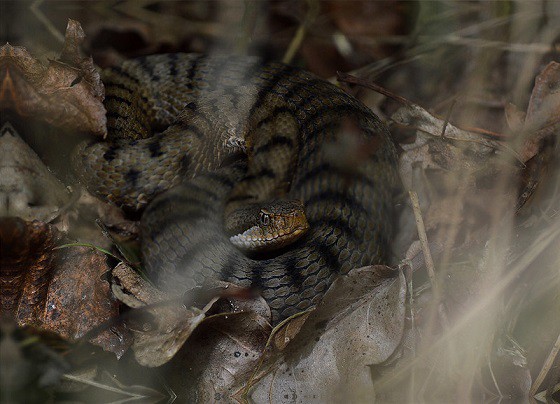
The third and final viper in Spain. The asp viper (Vipera aspis) is mainly a French species, but spills over the southern border to occupy a small area of land in Spain’s northeast. This is the main viper of the Spanish Pyrenees and foothills, and has the strongest venom of Spain’s three vipers.
One study analysed snakebites in Spain from 1965 to 1980. They found bites from all 3 species: Lataste’s vipers (125), the asp viper (80), and Baskian viper (23). 2 victims experienced neurotoxic symptoms, both of whom were asp viper victims. These included drooping eyelids, difficulty swallowing, difficulty speaking, and paralysis of the bitten extremity.
Asp vipers average at 40-80cm, and are another mammal loving-viper, especially enjoying the common European vole. Over 90% of their prey is mammals. Instead of complex patterns or blotches, the asp viper has numerous dark, slashing bands down their spine.
Between the three Vipera members, there’s isn’t a single region in Spain which doesn’t have one viper species. The three are neatly divided, with little overlap: Lataste’s viper in the centre and south, the asp viper in the northeast, and Vipera seoanoi in the north and northwest.
One study revealed their climate preferences. Lataste’s viper preferred dry, hot summers, while Vipera seoanei veered cooler, preferring an Atlantic climate of mild winters and short summers. The asp viper was inbetween the two.
Asp vipers reach an overall record of 82cm, but in Spain, they’re somewhat shorter, with a record of 68.5cm for a male found in Esterri de Cardós.
| 10 | Southern smooth snake |
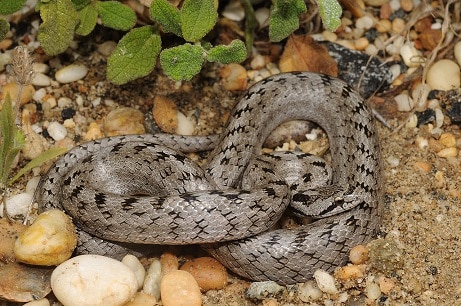
This harmless species is found in every region of Spain. Southern smooth snakes (Coronella girondica) live in woodlands and shrubland, and prey mainly on lizards. They climb trees very rarely, preferring to stick to the ground where they’re most comfortable.
A black stripe behind the eyes is a classic sign of a southern smooth snake. Their eyes are orange with round pupils, while their tongue is oily black. The absolute record length for this species was 96cm, as discovered on the French island of Oléron, but the maximum in Spain was a little over 80cm (recorded in Galicia).
Southern smooth snakes are commonly found on roads through forests, as they’re attracted to rocks, probably because they retain heat well. Fossils of this snake have been unearthed in Cueva Victoria, a famous archeological site where Neanderthal remains have been found. This cave also contains montpellier snake and viperine watersnake fossils.
Southern smooth snakes generally avoid human-inhabited areas, but might appear on the patio tiles of a village back garden. Although nowhere close to endangered (“least concern” from IUCN), they’re under threat in certain localities from habitat destruction. If the whole of Spain became a giant city, then the false smooth snake would disappear, while the montpellier snake might well survive.
